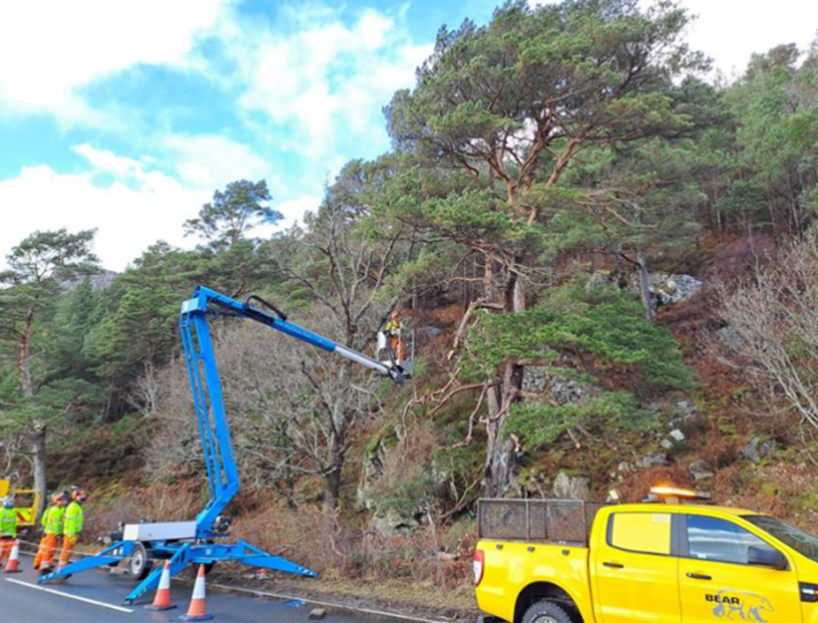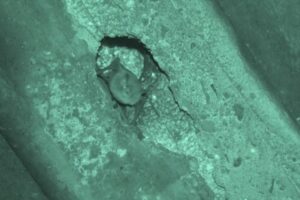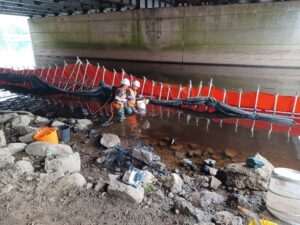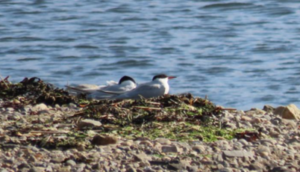
Here at BEAR Scotland, we undertake detailed ecological and environmental surveys prior to starting projects. This helps us understand our impact on the environment and allows us to take the necessary steps to protect the natural world.
When carrying out assessments, our environmental team need to take into account the type of works, seasonality, the location, and the presence of protected species.

Bats and their roosts are protected under legislation after the species suffered a devastating decline in numbers during the 20th century due to the destruction of woodland habitat where some species like to roost.
Various activities such as tree felling, bridge repairs, and rock slope works on our networks are carried out in locations that make ideal roosts for bats so our environment team regularly carry out bat surveys in line with industry guidance produced by the Bat Conservation Trust.
Night vision aids like infra-red and thermal imaging cameras are used during bat activity surveys to determine if bats are present and confirm roost access points. This technology aided our identification of a Daubenton’s bat summer roost on a bridge along the M9 with three bats recorded emerging from the north pier. As such, a NatureScot derogation license will be obtained prior to the commencement of works.
But it’s not about watching videos of cute bats! Carrying out bat surveys requires a good head for heights and specialist equipment like mobile elevated working platforms or scaffolding. Because bats roost at height, sometimes the only way to survey the area is by rope access or climbing trees.

We manage hundreds of bridge structures across our networks, so naturally our works happen in and around rivers, some of which are designated as Special Areas of Conservation for species like Atlantic salmon and lamprey.
When carrying out aquatic surveys on the River Forth in summer 2023, a variety of environmental and ecological input was required to protect the fish population including lamprey and salmonoids.
A hydrostatic barrier was installed to isolate the works area from the main flow of the River Forth,
allowing the fish to be relocated outwith the works area safely.
As well as protecting the wildlife living in the river, we also take steps to protect species living near these bodies of water, such as water voles, otters and beavers. Whether we’re setting up exclusion zones around burrows, monitoring beaver dams for potential flood risks or mapping available otter data, we’re committed to minimising our impact on Scotland’s wildlife.

The environment team plays a vital role in ensuring that works are conducted with minimal impact on bird species, particularly around designated breeding sites. Several types of bird monitoring surveys are carried out to ensure that there are no active nests present before works begin, identify potential disturbances and assess any behavioral impacts.
As part of our long-term maintenance of some of our major bridges, we monitor common, arctic, sandwich and rosette tern colonies between April and August. These weekly counts monitor when the terns arrive and leave the site, peak numbers of terns, and the presence of any chicks. We use this information to assess potential impacts on the tern colony and identify seasonal constraints or mitigation measures for future works.
Similarly, as part of our mitigation measures for the Rest and Be Thankful on the A83, helicopter flights are used for landslip monitoring and the delivery of vital resilience works. Since the flight paths are close to a designated site for golden eagles, we carry out vantage point surveys to ensure eagle activity is not disturbed by helicopter operations in the area.